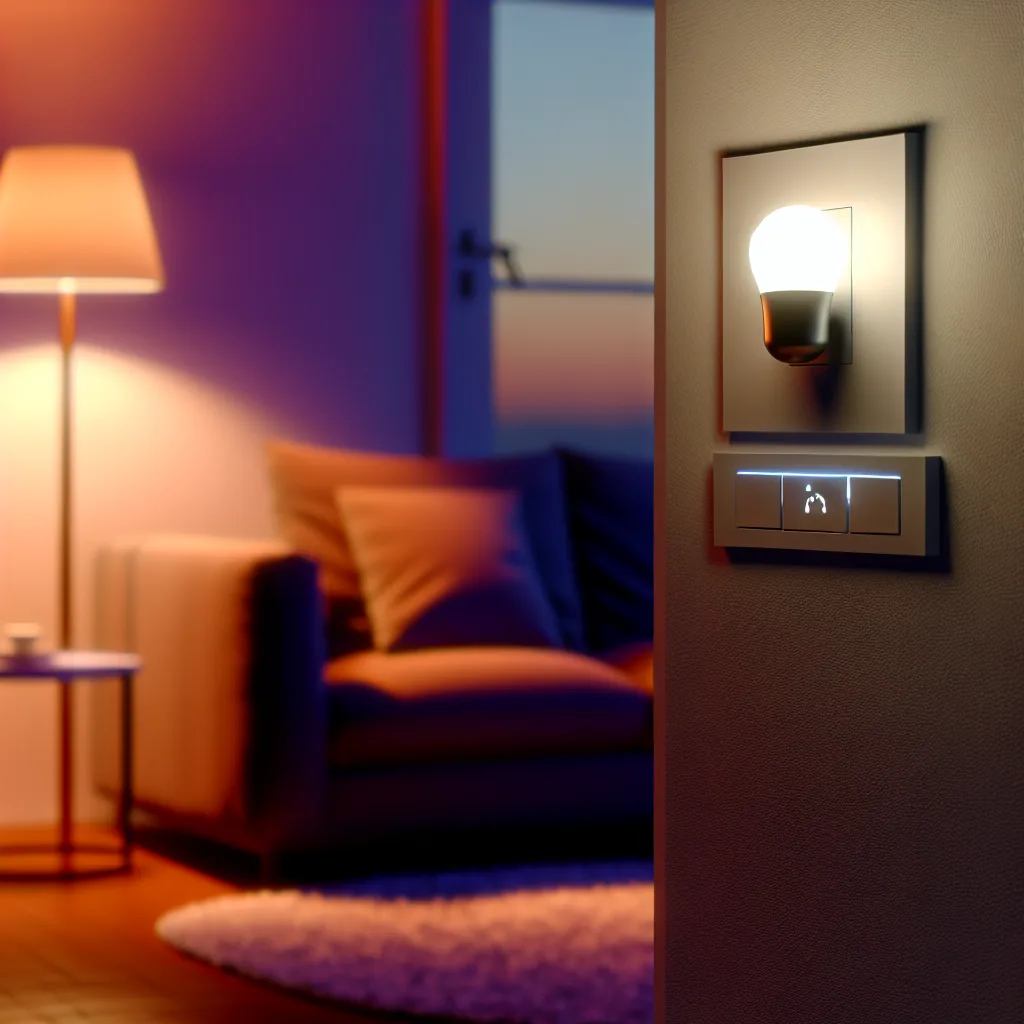Thinking about upgrading your home’s lighting? Here’s a simple, no-jargon look at getting started with your first smart lighting setup.
So, you’re thinking about diving into smart lighting. I get it. I’ve been circling the idea for months, picturing myself dimming the lights for a movie with a simple voice command. But every time I started researching, I’d get bogged down in technical jargon and a seemingly endless list of products. My initial excitement quickly turned into analysis paralysis. But I finally decided to jump in and figure out a smart lighting setup for my own place, and it turns out the biggest decision comes down to one simple question.
It’s the question that seems to trip everyone up at first: Do you go with smart bulbs or smart switches?
Let’s break it down in the simplest way possible, because honestly, it’s not as complicated as it sounds.
The Great Debate: Smart Bulbs vs. Smart Switches
At first, I thought, “Smart bulbs, obviously!” You just screw them in, and you’re done. And for some situations, that’s absolutely true.
- Smart Bulbs: These are light bulbs with Wi-Fi or another radio built-in. You replace your existing bulbs with them.
- Pros: Super easy to install. You can change colors (with RGB models), dim them, and control each bulb individually. Perfect for lamps.
- Cons: Here’s the big one. If someone (or you, out of pure muscle memory) flips the wall switch off, the smart bulb loses power. It’s now just a “dumb” bulb until you flip the switch back on. This is a huge pain.
- Smart Switches: These replace the actual light switch on your wall. The bulbs in the fixture can be regular, “dumb” bulbs.
- Pros: Anyone can use the light just like a normal switch. It’s intuitive for family and guests. It controls the entire fixture, so if you have a ceiling fan with four bulbs, one switch handles them all. The power is never cut to the bulbs, so your smart controls always work.
- Cons: Installation is more involved. You’ll need to be comfortable with some basic home wiring (or hire an electrician). You can’t change the color of the lights unless you also use smart bulbs.
Why Smart Switches Are My Starting Point
After thinking about how my house actually works, I’m leaning heavily toward starting with smart switches for most of my overhead lighting. The main reason is that “light switch muscle memory” is a real thing. I don’t want to have to train myself or my partner to stop using the switches on the wall.
I want the smart functionality to be an add-on, not a replacement for the basic function of a light. With a smart switch, the light still works like a light. You can tap it on or off. But you also get the ability to control it with your voice, set schedules, or manage it from your phone. For high-traffic areas like the kitchen or living room, this just makes sense. Brands like Lutron Caseta are incredibly popular for this because they are known to be rock-solid reliable.
The Perfect Place for a Smart Bulb in Your Smart Lighting Setup
But I’m not writing off smart bulbs entirely! They have a perfect place in a smart lighting setup, and that’s in lamps.
Think about the floor lamp in the corner of your living room or the reading lamps on your nightstands. These are often not connected to a wall switch, and they’re the ideal candidates for a smart bulb. This is where the fun stuff, like changing colors, comes into play. Want to set a relaxing warm orange glow for reading? Done. Want to sync your lights to a movie for an immersive feel? A brand like Philips Hue has built an entire ecosystem around this kind of ambient lighting.
So my plan is a hybrid approach:
* Smart Switches: For the main, hardwired ceiling lights.
* Smart Bulbs: For standalone lamps to add accent color and mood.
A Quick Word on Hubs (Don’t Be Scared)
You’ll hear terms like Wi-Fi, Zigbee, and Z-Wave. Here’s the simple version.
- Wi-Fi: These devices connect directly to your router. It’s the easiest way to start, but if you add too many, they can slow down your Wi-Fi network.
- Zigbee/Z-Wave: These are dedicated networks just for your smart home gadgets. They require a small device called a hub (some Amazon Echo devices have one built-in). Because they aren’t competing with your phone or Netflix stream, they are often faster and more reliable. For a deeper dive, tech sites like CNET have great explainers.
For a beginner, starting with a few Wi-Fi devices is perfectly fine. Don’t let the hub conversation stop you from getting started. You can always add one later if you get more serious about your smart lighting setup.
Ultimately, building a smart home is a marathon, not a sprint. Start with one room or even just one light. See what you like, what annoys you, and build from there. For me, that starting point is a single smart switch and a colorful smart bulb in a lamp. And I’m pretty excited about it.
